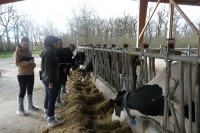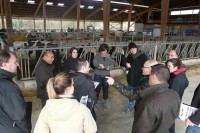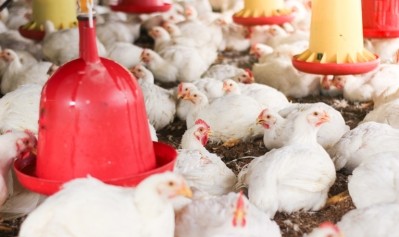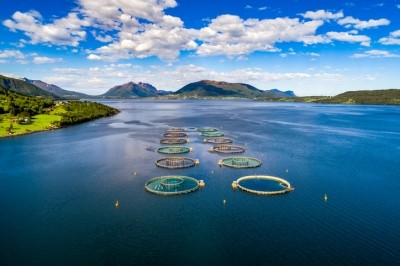Dispatches from SPACE 2017
Bigger scale dairy farms suit Lallemand Animal Nutrition: ‘It’s a perfect trend’
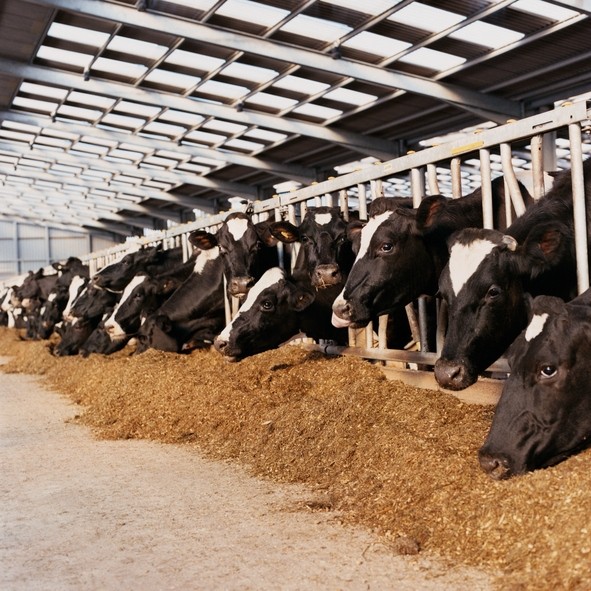
Dr Yannig Le Treut, general manager of Lallemand Animal Nutrition, commented on the growing consolidation trend in French milk production when we spoke to him at the SPACE 2017 trade show in Brittany earlier this month.
“We keep on seeing a change in dairy farm size; now you have a few dairy farms that are merging, and they have an average production of one million, two million liters of milk per year.
“Of course, that critical mass is supporting robotic machinery, automation, and precision feeding.”
“It is reported that there are 200 dairy farms leaving the business every month in France, but such [an exit] rate, really, has, more or less, always been the norm. When I started as a young vet, there were 150,000 dairy farms in France; today there are around 50,000 farms. I expect there will be only 35,000 farms in three to five years from now. However, they will be bigger and more technical.
“From a business standpoint it is good, though I don’t know how it will be from a societal point of view, such as how many people will still be living in the countryside - that is another issue.”
The bigger scale farm operations suit the strategy of a company like Lallemand, he said.
“That is exactly the kind of farm we are targeting – the farm that is interested in precision feeding, that has accurate reporting of data, we like [to do business with] farmers who are aware of their animals’ feed conversion rate, who look at daily reports for somatic cells and feed intake.
“It [the larger scale farm] is getting more and more precise, which is very good for us. They can see the effect of a product like Levucell SC for example.”
Selling the effect
Those farms are increasingly focusing on feed efficiency, and on fiber degradation - a company can no longer sell the label; today, it has to sell the effect, he continued.
Feed purchasing before, he said, was based more on what was on the label, not on any real evaluation of what was needed, nor on how the cows were fed, or the efficiency that could be gained. “Small farms would buy the feeds, the minerals just because of the relationship they had with a particular sales representatives. There was little focus on nutrition.”
Now there is a shift, he said. The bigger farmers, with 300 cows for example, have technical experts, and they are more demanding in terms of services: “They expect to see the effect. The trend is very much in support of what we are doing. We keep on investing and documenting, even in terms of our older product range, as we have new territories, new modes of production. What we are selling is very much science, technical results, and the effect they can measure. The more they measure, the more we can make the difference in the ‘jungle of gut health experts’.
He said Lallemand was a pioneer in terms of gut health research. “We have accumulated a lot of knowledge [in that time]. It is not just about adding [some millions of] live yeast or bacteria. We understand the way you have to manage the application and the synergies you can expect.”
Route to market
Lallemand Animal Nutrition has never changed its route to market. In many markets, it operates through distributors: “They know their market, and are well established with farmers or feed mills, and have their own in-house experts. Our role then is about knowledge transfer. We target high-level nutritionists, but also sales people."
“It is not only about the quality you see, it is also about the mode of action, the way you produce some of the bacteria, the stability, the metabolism.”
The company also has an educational program called Lallemand Forward, he said. That is aimed at different audiences - from top nutritionists to field persons and farmers, and includes, for example, the Rumen School and Silage School that show farmers how to implement good silage practices on farm, and there are professional development sessions organized by Lallemand and the Blanca dairy hub in Spain.
In some countries, such as France, for historical reasons, Lallemand has its own team; it does not have distributors but neither does it sell to the end user, given the number of dairy operations in the country still today.
“In the UK, it is different. We sell to both industry and the big farms directly. When the average milk production on French farms was 150,000 liters, it was already 400,000 to 500,000 liters in the UK. The trend is very clear in the UK. In three or four years from now, there will probably be only 4,000 milk production sites there. Most of the UK farms are using total mixed rations (TMR). They do not deal with any feed mill, so we had to be creative and find another route to market. We can advise the farmers directly.
“In the US, we have our own team, but we cannot cover all the states. We sell to feed mills, or we have independent nutritionists or distributors as partners there as well. You are dealing with 10,000 cow farms, so if one of our nutritionists would dedicate half a day to train the trainer or the user directly, it is worth it because, in terms of business, these are big quantities.”
Immunity
He said strategies to boost immunity are increasingly critical in livestock production:
“I graduated as a vet in 1984 and we were already told then that the antibiotic era was over. However, it took almost a generation to get to where we are now.
“Immunity is a very complex topic. It is an ever-changing science.
“Everybody now sees the value of prevention instead of treatment. Prevention used to be with antibiotics, but less and less. It it increasingly about market acceptance, and changing the mindset; even if you have 50 or 60% of medicated feed in France still, the market knows it has to change. It is no longer about talking, now it is about enforcement.”
All the large drug companies, he said, are moving from antibiotic research to vaccines investigation due to their cost effectiveness: “I am a vet, I do believe in vaccination, but the quality of vaccination and the effects are not really monitored, not really challenged. You have a lot of immune depressing agents around - viruses, mycotoxins, stressors.”
Lallemand, he said, believes that nutrition can help a lot. “Immune modulation starts, very much, in the gut. Therefore, this is the broader avenue we are now exploring. When you look at inflammation, immunity, oxidative stress, at the very early stages, we are speaking about the same thing, so this is why we have enlarged our antioxidant range.”
There is greater interest and market acceptance in relation to antioxidants now, he added.
“The mindset has shifted. The future of animal nutrition, though, is very much about interaction, precise nutrition.”
Fair and good competition is needed: “It is never as easy to convince a market when you are just alone. It helps when there are competitors - you have more publications, more papers, greater acceptance of the science. And then you have to make the difference, and then show that difference.”

